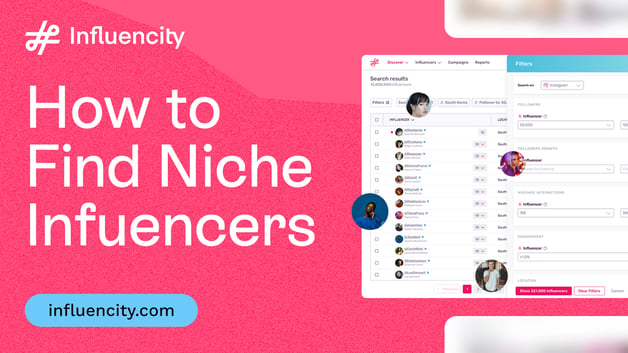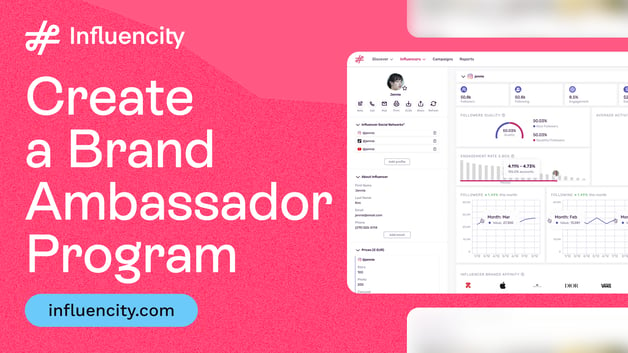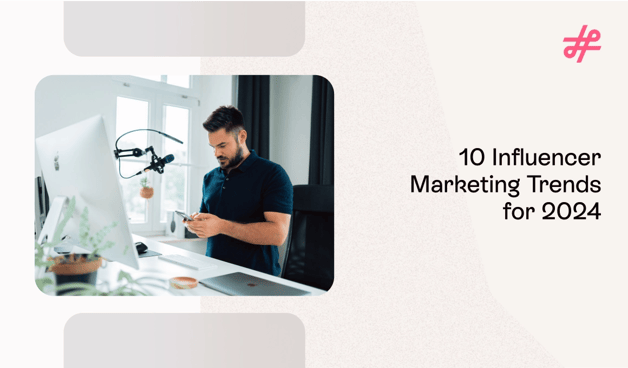Engagement Rate
How to Know What a Good Engagement Rate Is on Different Social Media Platforms
Engagement Rate
A big part of running a successful influencer marketing campaign is keeping an eye on how your posts are performing. There are plenty of ways to track success, but one of the most essential KPIs to watch is social media engagement. This metric tells you how much your audience is interacting with your content and gives you a clear idea of whether your campaign is making an impact.

But what exactly counts as a good engagement rate? Are there industry benchmarks to aim for? What factors affect engagement, and more importantly, how can you improve yours?
Let’s dive in.
What Is an Engagement Rate?
Before we answer the question “What is a good engagement rate?”, let’s start with a basic definition: What does engagement rate mean and how do you analyze it?
Engagement rate is a key metric in influencer marketing that shows how much an audience is interacting with a post. It includes likes, comments, shares, and other forms of engagement, giving brands a clear idea of how well their content is connecting with people. It is typically expressed as a percentage, and it is calculated as follows.
Total Engagement / Total Number of Followers or Impressions x 100
A high engagement rate means people are responding well to the content, while a low engagement rate could signal that it’s not hitting the mark. Tracking engagement over time helps brands see what’s working, compare different content types, and measure the impact of their influencer partnerships. Whether you’re testing new formats or evaluating influencer performance, engagement rate is a simple but powerful way to gauge success.
How to Calculate Engagement Rate
As we mentioned briefly above, the social engagement rate of a post is calculated by dividing the total number of engagements (likes, comments, shares, etc.) by the total number of followers or impressions, and then multiplying by 100 to obtain a percentage.
Here is the formula for calculating engagement:
Engagement Rate = (Total Engagements / Total Followers or Impressions) x 100
For example, if a post has 100 likes, 20 comments, and 50 shares (170 interactions), and the account has 1,000 followers, then the engagement rate would be:
Engagement Rate = (170 / 1,000) x 100 = 17%
A higher engagement rate indicates that users are more interested in and interacting with the content.
Why Engagement Rate Matters for Social Media Success
Engagement rate isn’t just a number. It shows how much people actually care about your content. When someone likes, comments, or shares your post, it means they’re paying attention, not just scrolling past. And the more engagement you get, the more Instagram’s algorithm pushes your content to a wider audience, helping you reach even more people.
Tracking your engagement rate is also a great way to tell if your content is working. A post might get thousands of views, but if no one interacts with it, that reach isn’t turning into real impact. Engagement helps you see what your audience enjoys, what sparks conversations, and what keeps them coming back for more.
Ultimately, for brands and influencers, a strong engagement rate builds trust and credibility. It leads to better brand awareness, stronger relationships with followers, and more conversions over time. Whether you’re running an influencer campaign or trying to grow your own presence, focusing on engagement is one of the best ways to create a real connection with your audience.
Industry Benchmarks for a Good Engagement Rate
Understanding how your social media engagement measures up can offer valuable insights into your performance. Different industries naturally experience varying levels of interaction, so it's helpful to know what's typical in your field.
Here's a snapshot of average engagement rates across various industries and platforms as of January 2025:
|
Industry |
|
Instagram Reels |
|
X (Twitter) |
|
TikTok |
|
Construction, mining, and manufacturing |
2.8% |
2.6% |
1.6% |
N/A |
3.3% |
N/A |
|
Consumer goods and retail |
1.8% |
2.1% |
1.2% |
0.9% |
N/A |
N/A |
|
Dining, hospitality, and tourism |
1.9% |
1.7% |
0.9% |
N/A |
N/A |
0.6% |
|
Finance |
1.8% |
1% |
1.2% |
1.1% |
2.3% |
N/A |
|
Government |
3.2% |
2.3% |
2% |
1.6% |
3.6% |
N/A |
|
Healthcare, pharma, and biotech |
1.6% |
1.3% |
1.3% |
1.3% |
2.8% |
N/A |
|
Media and entertainment |
2% |
2% |
1.3% |
1.7% |
N/A |
2.1% |
|
Non profit |
2.2% |
2.6% |
1.8% |
1.1% |
1.7% |
N/A |
|
Real estate, legal, and professional services |
2.9% |
2% |
1.8% |
0.9% |
2.6% |
N/A |
|
Overall (all industries) |
2% |
1.9% |
1.4% |
1.6% |
2.8% |
2% |
Source: Hootsuite Blog
These benchmarks provide a general idea of what to expect, but remember, they're averages. Your unique content, audience, and strategy play significant roles in your engagement rates. If your numbers are above these averages, you're likely on the right track. If they're below, it might be time to reassess your content and engagement strategies.
Finally, keep in mind that engagement rates can fluctuate based on factors like content quality, posting frequency, and how well you understand your audience's preferences. Regularly monitoring your performance and comparing it to these benchmarks can help you fine-tune your approach and boost your social media success.
How to Compare Engagement Rates Across Platforms
Not all social media platforms are the same, and neither are their engagement rates. A post that does well on Instagram might not get the same reaction on LinkedIn or Twitter, and that’s completely normal. The way people interact with content depends on the platform, the audience, and the type of content being shared.
For example, Instagram tends to have higher engagement because it’s built around visuals and quick interactions. People scroll, double-tap, leave comments, and share posts without too much effort. TikTok takes engagement even further since the platform is designed for short, snappy videos that keep users watching and interacting. On the other hand, Twitter (X) has a much lower engagement rate because people skim through their feeds quickly. LinkedIn sits somewhere in between, with engagement often coming in the form of thoughtful comments and shares rather than casual likes.
To put things into perspective, here’s how engagement rates stack up across different platforms:
-Aug-28-2025-10-37-10-9423-AM.png?width=600&height=450&name=White%20%26%20Green%20Modern%20Bar%20Chart%20Graph%20(1)-Aug-28-2025-10-37-10-9423-AM.png)
Source: Hootsuite Blog
If your engagement rate on TikTok is way higher than on Twitter, that’s completely expected. It doesn’t mean your content isn’t working. It just means people interact differently on each platform. Instead of trying to hit the same numbers everywhere, focus on what’s working best for each audience.
If you’re running campaigns across multiple platforms, tracking engagement separately will help you see where your content is making the biggest impact. Some platforms naturally drive more interaction than others, so the key is knowing where your audience is most engaged and shaping your strategy around that.
What Is a Good Engagement Rate?
So, what exactly counts as a "good" engagement rate? As we’ve seen above, It depends on the platform, your industry, and your audience. A high engagement rate on one platform might be considered low on another, so it’s important to compare your numbers to relevant benchmarks rather than expecting a one-size-fits-all target.
In general, here’s a rough guide for what engagement rates typically mean:
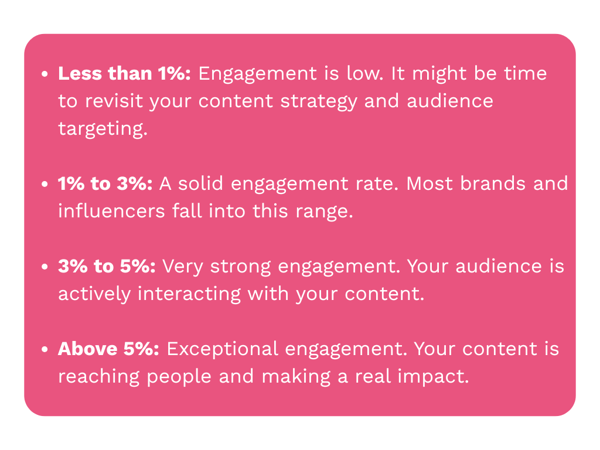
Of course, context matters. A brand targeting a niche audience with highly specific content might see lower engagement but still have a strong, loyal following. On the other hand, viral content or platforms like TikTok may naturally have much higher engagement rates.
Rather than obsessing over the number itself, focus on consistent engagement growth over time. If your audience is interacting more, commenting more, and sharing more, you’re on the right track.
Finally, engagement rates are important, but they’re not the only way to measure success. If you’re looking at an influencer to see if they’re a good fit for your brand, you’ll want to dig deeper. Check out their content quality, audience demographics, and whether their values and messaging align with yours. A high engagement rate means nothing if their followers aren’t the right audience for your brand.
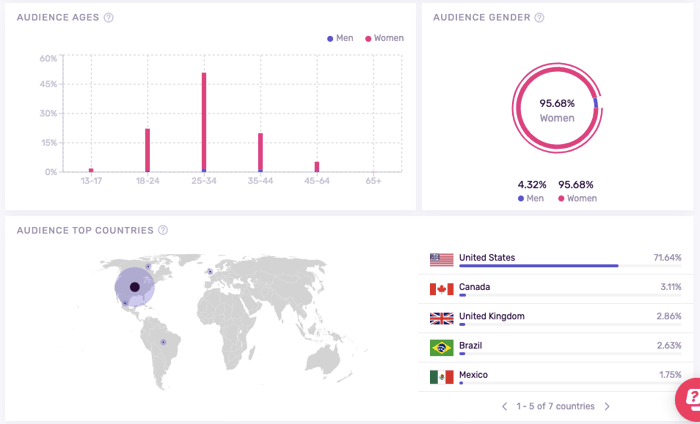
Also, when it comes to tracking campaign performance, engagement is just one piece of the puzzle. You’ll also want to keep an eye on reach, impressions, click-through rate, conversion rates, and cost per engagement. The metrics that matter most will depend on your campaign goals, so focus on the numbers that actually show whether your strategy is working.
Common Engagement Rate Metrics
There’s more than one way to measure engagement and different platforms and content types call for different metrics. The key is knowing which ones matter most for your goals.
One of the most commonly used metrics is social media engagement rate, which looks at likes, comments, shares, and other interactions relative to followers or impressions (as we have seen in today’s post). It’s a great way to see how well your content resonates with your audience.
Another important metric is email engagement rate, which tracks open rates, click-through rates, and even how often emails get forwarded or shared. If you’re running email campaigns, your Customer Relationship Management (CRM) tool should give you a detailed breakdown of these stats.

For websites, website engagement rate measures how visitors interact with your content. Page views, time spent on pages, and actions like filling out forms or clicking buttons all indicate how engaged users are with your site.
When it comes to video content, video engagement rate is the go-to metric. It looks at total views, watch time, likes, comments, and shares to show how well your videos are performing. YouTube and other video platforms offer detailed analytics to help track this.

Lastly, engagement rate per follower is useful for spotting potential influencer fraud. It compares an influencer’s engagement to their total follower count, giving a clearer picture of how real and active their audience is. If an account has tons of followers but barely any engagement, it could be a sign of fake or inactive followers.
Tracking these different engagement rate metrics can help you fine-tune your strategy and make sure your content is actually connecting with your audience.
Factors That Can Influence Engagement Rates
As we already mentioned, engagement rates aren’t set in stone. A lot of different factors can impact how much people interact with your content.
First, content quality and relevance are key. If your content isn’t interesting, helpful, or entertaining, people won’t engage with it. It’s as simple as that.
Posting consistency also plays a role. If you post too often, you might overwhelm your audience. If you post too little, they might forget about you. Finding the right balance is important.
Timing matters too. Posting when your audience is most active increases the chances of engagement. If you’re posting at random times when your followers aren’t online, you’re missing opportunities.
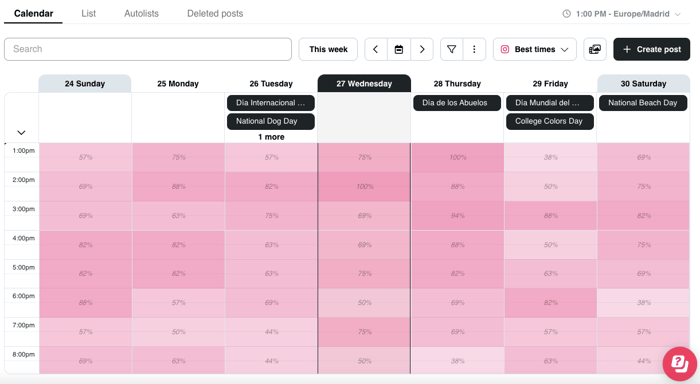
Different platforms have different engagement levels as well, as we saw earlier in the post. Instagram and TikTok tend to see higher engagement rates, while Twitter and LinkedIn usually have lower numbers. This doesn’t mean one platform is better than another. It just means you should adjust your expectations based on where you’re posting.
Another factor to consider is the quality of your followers. Having a large number of followers is not always beneficial if they are inactive or not genuinely interested in your content. Engaged, relevant followers are much more valuable than a huge, passive audience because they are the ones most likely to like, comment, share, and take action.
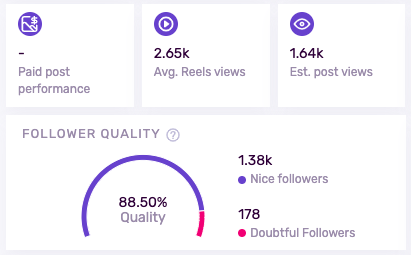
Additionally, the type of interaction matters. Not all engagements are equal: comments and shares often indicate deeper involvement than a simple like. Encouraging meaningful interactions can help you understand your audience better and improve your content strategy.
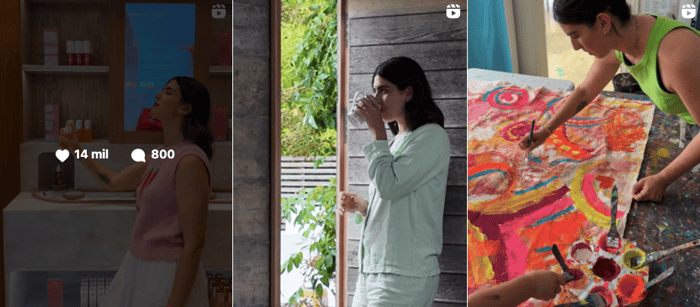
Finally, one of the biggest influencers of engagement is platform algorithm changes. For example, when Instagram switched from a chronological feed to an engagement-based one, many users saw their engagement drop overnight. Social media platforms are always tweaking their algorithms, so it’s important to stay updated and adjust your strategy when needed.
By understanding these factors, you can optimize your content, timing, and strategy to keep your engagement rates strong
Tips To Help You Boost Your Engagement Rate
If you’re looking to increase engagement, here are some tried-and-true tactics that actually work:
- Create high-quality content. People are more likely to engage with content that looks good and provides value. Use high-quality images and videos, and write captions that spark conversation.
- Post consistently. Stick to a regular schedule so your audience knows when to expect new content.
- Engage with your audience. Reply to comments, answer questions, and start conversations. The more you engage, the more likely your audience is to interact with you.
- Use hashtags strategically. The right hashtags help expand your reach and attract new followers.
- Collaborate with influencers. Partnering with influencers in your niche can help introduce your brand to new, engaged audiences.
- Run contests and giveaways. People love free stuff. Contests and giveaways can boost engagement and attract more followers.
@ugcbymette ✨GIVEAWAY TIME ✨ Hey guys! I really needed a break from social media, but I'm trying to get back on track. I wanted to thank you all for your continued love and support - and what better way to do it than with a giveaway? 🧴🧖♀️🌸🎀 📝You must be following the rules to participate, and I will pick a winner on August 24th. - You must follow this account @ugcbymette - Like and share/repost this post - Tag 2 friends - You must reside in Europe 🌏 This is not sponsored by any of the brands or Instagram. I will pay for the shipping, but I can't be held responsible for any lost or delayed packages once they're on their way. Thank you so much for joining🩷 #kbeauty #giveaway #beauty #skincaregiveaway ♬ Jet2 Advert - ✈️A7-BBH | MAN 🇬🇧
- Track your performance. Regularly check your engagement metrics to see what’s working and what needs tweaking.
- Set realistic benchmarks. Instead of comparing yourself to massive brands, focus on improving your engagement over time.
These simple tweaks can make a big difference in how your audience interacts with your content.

How to Use Engagement Rates in Your Social Strategy
Finally, engagement rates are more than just numbers. They tell you how well your content is connecting with your audience and where you might need to adjust your approach.
Here’s how you can incorporate this data into your social strategy:
- Start by setting clear goals. Are you trying to increase brand awareness, drive traffic to your website, or generate leads? Knowing what you want to achieve will help you focus on the right engagement metrics.
- Choose the right metrics for each platform. Not all engagement looks the same. If you are focused on brand awareness, track likes, shares, and comments. If conversions are the goal, pay attention to click-through rates and form submissions.
- Monitor trends over time. Engagement rates will naturally fluctuate, so don’t stress over small drops. Instead, look at the bigger picture to see whether engagement is improving or declining over time.
- Analyze your best-performing content. Take a close look at posts that get the most engagement. What do they have in common? It could be the format, the topic, or even the way you wrote the caption. Use that information to guide future content.

- Engagement works both ways. If people are commenting on your posts, take the time to respond. Starting conversations makes your audience feel valued and builds stronger relationships.
- Be willing to experiment. Social media is always changing, and what works today might not work tomorrow. Try out different content styles, posting times, and engagement tactics to see what resonates best with your audience.
Finally, while engagement rates are important, they are not the only thing that matters. Pairing engagement insights with other data like brand sentiment and customer feedback will give you a more complete picture of your social media success. Use engagement as a guide, but always keep the bigger picture in mind.
Tags:
Social Media Platforms





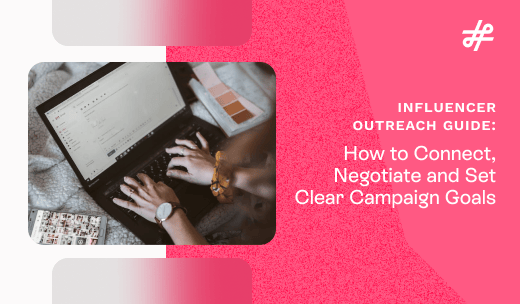
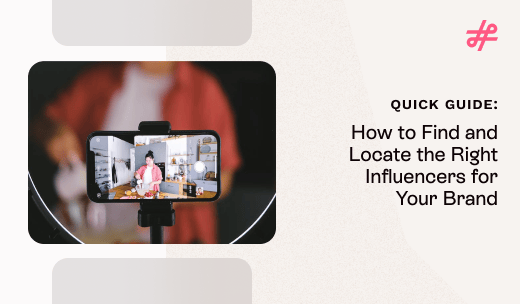








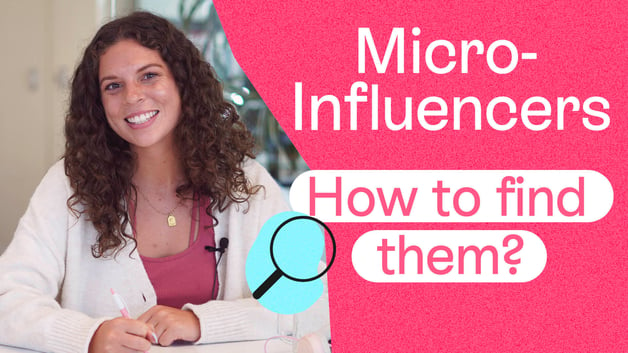


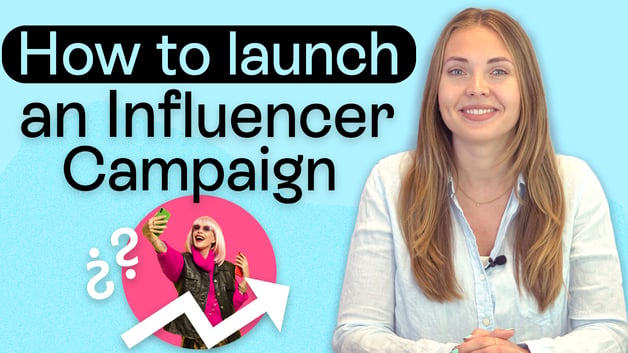

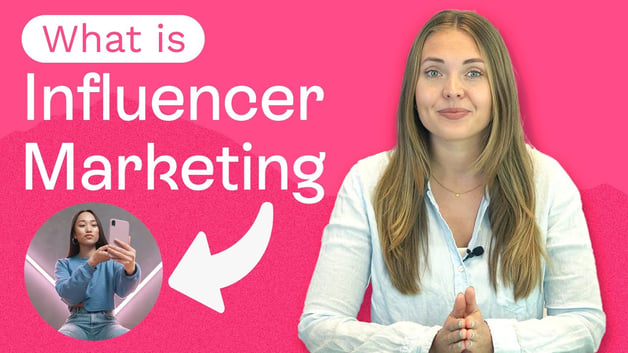

%20and%20How%20Can%20They%20Benefit%20Your%20Brand%20article.jpg?length=628&name=What%20Are%20Key%20Opinion%20Leaders%20(KOL)%20and%20How%20Can%20They%20Benefit%20Your%20Brand%20article.jpg)
